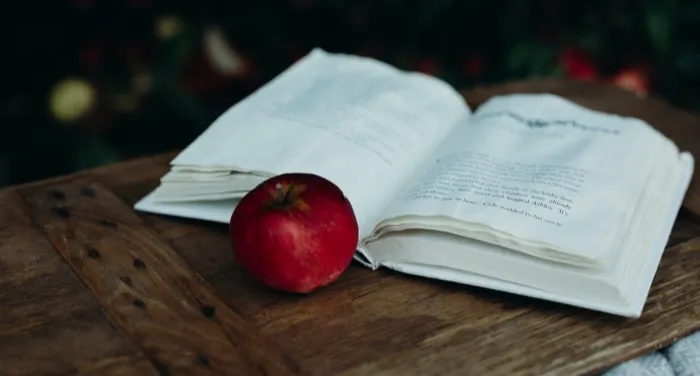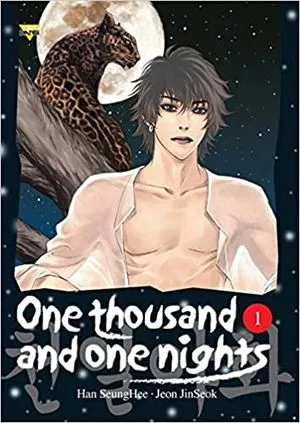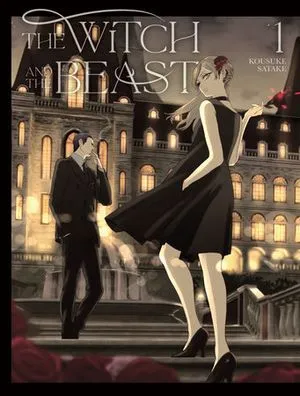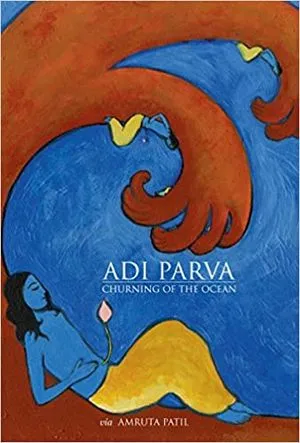
Comics A-Z: Fairytales, Folktales, and Myths from Aladdin to Durga
This past weekend, I took a fantastic workshop on using folklore in fiction writing. Part of the workshop was, naturally, a discussion on whether or not one should use folklore from a culture other than one’s own in one’s work; opinions between those who are conscious of the pitfalls (some people remain obstinately oblivious which…*sigh* but that’s a different post) was split between “no, absolutely not, especially if you’re talking about a living culture,” and “yes, but,” the caveats being “do the hell out of your diligence and then hire sensitivity readers and listen to their critique and if they tell you you did something wrong fix it.” (P.S. Your friends who may be of a certain cultural or ethnic background are not there to be your sensitivity readers, and if you should be lucky enough they agree to do the task for you, they are not there to pat you on the head and tell you you did great if you didn’t).
If you’re not willing to do those things, then stay in your own lane because people who think the whole world is up for their grabs have already done plenty of damage, and no one needs any more of your appropriative “it was just a bit of fun” takes.
I see you wondering why I think I have the right to say anything about this and that’s fair. Here’s the thing: surface, I look like a lot of other ally-type early-middle aged ladies, but I grew up in a Conservative Jewish household. So when I see folx casually slinging golems around or saying sure, Oscar Isaac would make a fantastic Moon Knight (that’s an “M” preview for you)…hnnngh. And while no, it is certainly not to the same extent other cultures have had their very souls appropriated. But it does poke me in the lizard brain and engage lock-down.
So. What I’m going to do in this A–Z is look at fairytales, folktales, and myths from a different direction (and a couple of different angles): I’m going to look at stories that are either western in origin that have been reimagined through other lenses, stories that were coopted and have now been retold by the people to whom they originally belonged, or upcoming stories about which I’ve noticed people voicing concerns for culturally linked reasons. There do seem to be some cross-cultural ur-stories (e.g. great floods, the taming of primordial chaos, and oddly, vampires?) that I’m planning to stay away from since they’ve already been fed through a truly staggering number of cultural lenses. If I tend toward manga it’s because that’s what I’ve read most widely in comics originating outside of the U.S. so far, but I am actively working to widen my perspective and hey, if you have any recommendations, please send them to @BookRiot.
Alright, here we go!
A: Aladdin
One Thousand and One Nights Vol.1 by Jin-Seok Jeon and Seung-Hee Han
Arafat A. Razzaque’s article “Who Was the Real Aladdin? From Chinese to Arab in 300 Years” is an excellent account of the character’s origins and his travels, both plot-driven and geographical. Popularized after its inclusion in The Thousand and One Nights, a volume of tales collected over many centuries by many storytellers and scribes from many different places, the first recorded version of “Aladdin and his Wonderful Lamp” is set not in the Middle East but in China. The version most of us know, however, isn’t the original, nor even the adapted tales that made their way through various Arabic-speaking countries and India; we know the version filtered through a Syrian adaptation translated into French by Antoine Galland in the early 1700s.
That’s a lot of degrees of separation.
I did some digging and found several prose translations and interpretations of “Aladdin and his Wonderful Lamp” done by Arabic-speaking writers and scholars, but neither graphic novels nor comics—I’m not sure whether or not this has something to do with the subject matter, the prohibition on certain types of images, or if it’s simply that no one has gotten around to it yet. Alas, I didn’t find any versions illustrated by Chinese or Indian artists either (they may very well be out there and not have English translations).
I did find a Korean reimagining of the Thousand and One Nights frame narrative that looked interesting, and that, I hope, might provide some insight into how a non-western culture views the story of the lazy tailor’s son who lucked into magic he didn’t deserve and won a princess despite his initial muppet flailing. And how that story bought Sheherazade one more night.
B: Beauty and the Beast
The Witch and the Beast by Kousuke Satake
A good deal of both the manga and Japanese and South Asian prose I’ve ready lately is cross-genre fiction that pairs horror with fantasy and mythology (Black Cranes, Where The Wild Ladies Are). I’ve noticed that the horror component in many of these stories stems from society’s reluctance to allow women autonomy over their own bodies not only because of what those bodies might do with that freedom, but because the restrictions placed upon them for so long might have fermented into something men, with their increasingly tenuous grips on formerly patriarchal societies, do (and should) fear, lest their last gasps be shrieks of fear.
The Witch and the Beast is a version of Beauty and the Beast in which the beast is subject to the beauty, in which he depends upon her for survival. It is a story in which magic is a weapon women wield when they are wronged and to which men are subject because, quite frankly, they deserve it. Slick, stylish, a little terrifying, and, in my opinion, more than a little satisfying, I’ve already preordered the other five volumes of Satake’s fractured fairytale.
C: Celestials
Boxers & Saints by Gene Luen Yang and Lark Pien
Both DC and Marvel have used ancient Chinese deities freely as characters in their books. Marvel, as many of you are doubtlessly aware, have also coopted the term “Celestials” to refer to a race of aliens with god-like powers who are, to a great extent, giant jerks.
Safe to assume Gene Luen Yang and Lark Pien are a little more careful and a great deal more knowledgeable in their depictions of the gods who appear to Little Bao and urge him to take up arms against the missionaries and colonizers who have plundered his village, leaving his people with no choice but to fight for survival.
Yang also deliberately flipped the script used in older comics in using gibberish language where the script is portraying a foreigner attempting to communicate with a Chinese speaking character as it was important to him that this story be told from the point of view of Chinese protagonists.
Take that, interlopers.
D: Durga
Adi Parva by Amruta Patil
In this reimagining of the Mahābhārata, writer and artist Patil casts the River Ganga as the omniscient narrator of one of the great Sanskrit epics. It is tale of primordial chaos, of gods and goddesses, of heroes, queens, and warriors. Among those immortals are Yudhisthira (one of the five Pandavas) and Arjuna (traditionally considered the Mahābhārata‘s protagonist, also a Pandava, a powerful warrior, skilled musician and dancer, renown archer, chosen of Krishna, and twice exiled from his home) both of whom invoked the goddess Durga in their prayers during their trials, a goddess often depicted riding a lion or tiger and with anywhere from eight to eighteen hands, each holding a weapon. Like Shiva, though Durga is a war deity, she is also a creator, both carrying weapons traditionally assigned to male gods and worshipped as the divine mother of all creation.
See. It’s out there. You just have to put in the time to look. Y’all don’t have that time; that’s why you have me.
Who know’s how far we’ll go.













